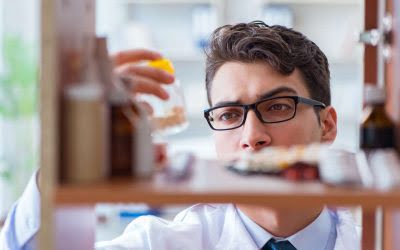Content
You may also consider joining an online support group to help you feel less alone. It might also be worth checking out a 12-step program in your area, like Alcoholics Anonymous or SMART Recovery, to see if it feels like something that might be useful for you. Maybe you’ve never been interested in logging your innermost thoughts, but journaling http://www.bibliograf.ru/materials/news/2678/ can be a great tool to track your feelings as you work on quitting alcohol. Feeling at your best physically can boost resilience and emotional strength, equipping you to weather challenges that trigger the desire to drink. Letting others know about your choice to stop drinking may help motivate you to stick with your decision.
- People may seem more accepting or less judgmental, and you might feel you “fit in.” You may convince yourself that experiences are more enjoyable and conversation more relaxed.
- When you’re craving alcohol, there’s a tendency to remember the positive effects of drinking and forget the negatives.
- He hadn’t been excessively drunk since he was a teenager, and got up at 5.30am every day to exercise, but the daily consumption of beer and wine was adding up.
- These accidents were preventable if an intoxicated person had not driven.
- Continual heavy alcohol consumption damages multiple organs/systems.
“Being in recovery has given me everything of value that I have in my life,” Lowe said when accepting the award. In every state of the United States, it is illegal for anyone to drive any vehicle if they have a BAC of 0.08 or higher, according to the National Highway Traffic Safety Administration. The idea of someone being able to sober up fast so they can drive is not realistic. BAC levels will remain high until the liver has had time to metabolize alcohol. However, many factors, such as gender, medications, and health, can affect intoxication and cause BAC to rise quicker and fall slower.
What are the symptoms of alcohol use disorder?
Receive weekly insights to help you and your loved ones on your road to recovery. You might remember some things that were helpful the first time. Or, you might have ideas about what could have made the process easier.
If you drink more alcohol than that, consider cutting back or quitting. Your treatment setting will depend on your stage of recovery and the severity of your illness. You may need inpatient medical (hospital), residential rehabilitation (rehab), outpatient intensive therapy or outpatient maintenance. Even just one bout of drinking too much may weaken your body’s germ-fighting power for up to 24 hours.
Eat before and in between drinks.
To avoid getting too drunk, stick with drinks with low alcohol content, such as light beer. You may begin to feel the effects of alcohol within 10 minutes of drinking. Exploring, in writing, what you find difficult and when you most want to drink can help you notice patterns that offer more insight into your alcohol use. Comparing the emotions that come up when you have a drink with the feelings you experience when abstaining also helps you recognize when drinking doesn’t fix the problems you’re trying to manage. By avoiding alcohol, you’re taking a big step toward improving physical health.

Just ten minutes after drinking even a small amount of alcohol, most people who take disulfiram experience severe side effects—including chest pains, nausea, and vomiting. These side effects may last for an hour or longer, and can serve as a powerful deterrent. The three most commonly used medications for alcohol use disorder are naltrexone, disulfiram, and acamprosate. Of these three medications, naltrexone is the best option for people seeking to limit their drinking, versus abstaining completely. For these individuals, medication-assisted treatment was a game changer, allowing them to finally establish a different relationship with alcohol. Recently, we surveyed Facebook users who consider themselves “problem drinkers” about the effectiveness of alternative, medication-assisted treatment.
GI Tract and Alcohol
At any stage of life, heavy
alcohol or drug use alters the brain. When people stop drinking or using drugs, the brain does not return to
normal. But with treatment and AA, these
people learn to manage the resulting symptoms. They manage stress with prayer and meditation
and by living life one day at a time. When they need help, they turn
to other people for support and encouragement.
Remind yourself of the adverse long-term effects of heavy drinking and how it won’t really make you feel better, even in the short term. Cravings for alcohol can be intense, particularly in the first six months after you quit drinking. Good alcohol treatment prepares you for these challenges, helping you develop new coping skills to deal with stressful situations, alcohol cravings, and social pressure to drink. The https://www.bez-granic.ru/main/lichnostivistorii.html?start=100 symptoms listed above may be a sign of a severe form of alcohol withdrawal called delirium tremens, or DTs. This rare, emergency condition causes dangerous changes in the way your brain regulates your circulation and breathing, so it’s important to get to the hospital right away. Most people with alcohol problems do not decide to make a big change out of the blue or transform their drinking habits overnight.

